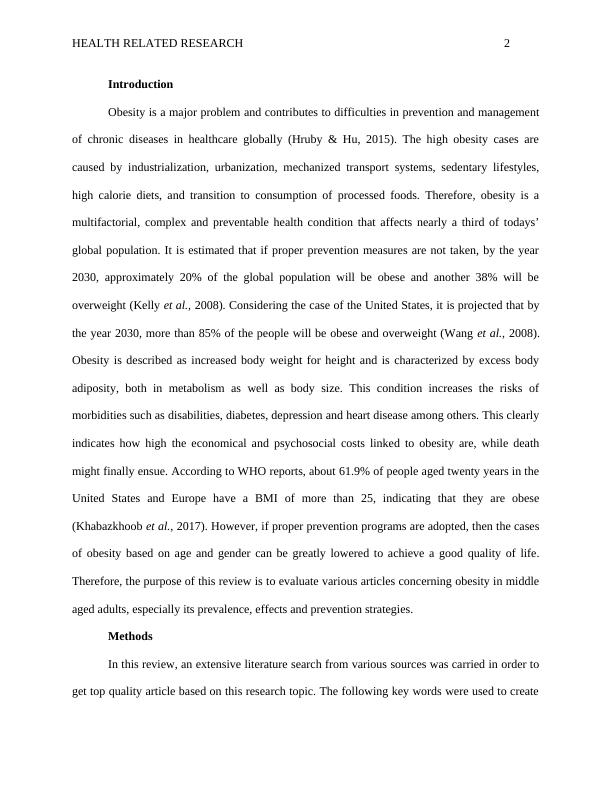Obesity in Middle Aged Adults: Prevalence, Effects, and Prevention Strategies
This is an introduction to the topic (all 4 articles must be on the same topic)
13 Pages4162 Words103 Views
Added on 2023-06-13
About This Document
This review evaluates various articles concerning obesity in middle aged adults, especially its prevalence, effects and prevention strategies. The review includes a detailed analysis of four research articles that meet the inclusion criteria of being specific about obesity in middle age adults. The article discusses the interventions, methods, and results of each study. The discussion section highlights the causes and effects of obesity in middle aged adults and the need for appropriate measures to control these non-communicable diseases.
Obesity in Middle Aged Adults: Prevalence, Effects, and Prevention Strategies
This is an introduction to the topic (all 4 articles must be on the same topic)
Added on 2023-06-13
ShareRelated Documents
End of preview
Want to access all the pages? Upload your documents or become a member.
Cardiovascular Disease and Cognition in Older Adult
|7
|1668
|419
Role of lifestyle interventions in preventing diabetes: A literature review
|36
|5639
|314
Healthcare Assignment: Healthcare Research
|28
|5523
|68
Assessment 1 Critical Appraisal Literature Review
|7
|1971
|390
Impact of Obesity on Mental Health: A Review of Occupational Therapy Interventions
|13
|3618
|108
Association between Depression and Type 2 Diabetes: A Critical Appraisal
|12
|2552
|65




